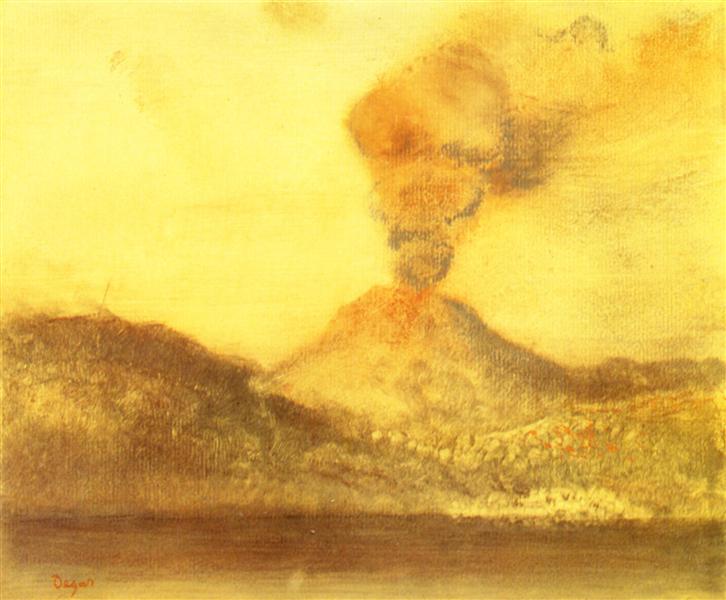Description
The work "Vesuvio" by Edgar Degas, dated in 1892, is a fascinating representation of the majestic volcano that has captured the imagination of artists and travelers over the centuries. Although Degas is mostly known for its evocative portraits and scenes of ballet, its interest in the landscape is manifested in this work, where the force of nature becomes the central theme. Degas, with its particular approach to light and color, manages to capture the vibrant atmosphere and the intense landscape of this famous volcano located in Italy.
The composition of the painting is particularly remarkable. Vesuvio rises majestically in the center of the work, present and dominant. Around it, a landscape of soft hills descends to the bottom, creating a contrast between the vertical force of the volcano and the horizontality of the earth. The choice of a color palette that covers from the terrible green of vegetation to the soft blue of the sky provides a sense of serenity, while suggesting the imminent energy of the volcano. Degas uses tones that pass through various layers, making the light seek to filter and change depending on the atmosphere, an echo of its mastery in the use of chiaroscuro.
An intriguing aspect of the work is the absence of human figures. This is significant in the context of Degas's style, who often included dancers or people in their compositions, but here the approach focuses exclusively on the landscape. This decision can be interpreted as a comment on the insignificance of the human being against the powerful nature, or perhaps as a way of transcending the usual narrative of his work, allowing the landscape to speak by itself.
The brushstroke in "Vesubio" is characteristic of the impressionist style, although it has often distanced himself from being classified simply as an impressionist, preferring a more careful and drawn technique. In this work, the fusion of light and color, together with the investigation of the form, is used to transmit not only the image of the volcano, but also its character and its history. Degas seems to be interested not only in the visual representation, but in evoking the emotional experience of the viewer in the face of the immensity and strength of the eruption of Vesubio.
The work is also part of a broader context within the Degas race. During this time, I was exploring the landscape as a more serious issue, in a career that had been dominated, until that moment, by the human figure. "Vesubio" is an example of its ability to adapt and explore new territories, both conceptually and technically. Its landscape treatment still reflects a concern for the elements of the form, light and movement, concepts that also underlie their most famous work.
In conclusion, "Vesubio" is presented not only as a beautiful image, but also as a testimony of the relationship between human being and nature. The work embodies the unique ability of Degas to capture the essence of its subject through a vibrant palette and a careful composition, inviting the viewer to reflect on the majesty of the landscape and the eternal presence of the volcano in artistic and cultural history. Through this painting, Degas offers us a vision that transcends time, revealing the beauty and concern that emanates from this impressive natural monument.
KUADROS ©, a famous paint on your wall.
Hand-made oil painting reproductions, with the quality of professional artists and the distinctive seal of KUADROS ©.
Reproduction service paintings With a guarantee of satisfaction. If you are not completely satisfied with the replica of your painting, we refund your money 100%.

